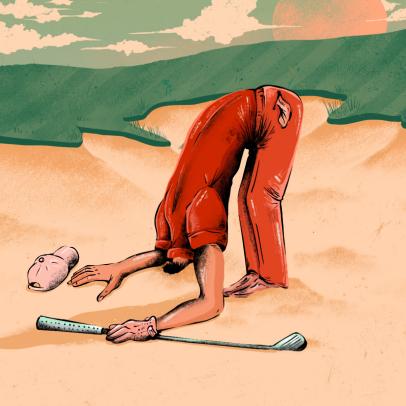FIX IT FAST, FIX IT FOREVER
How to survive 6 common faults on the course and eliminate them for good when you practice
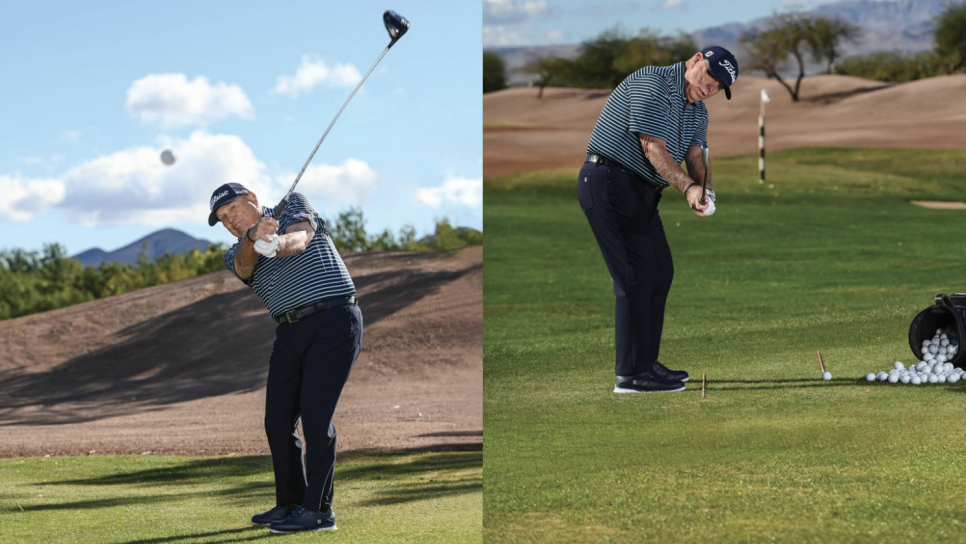
Photographs by J.D. Cuban
SLICING OFF THE TEE
FAST FIX
■ Golfers who fight a slice try to pull the ball in the opposite direction to give it more room to curve and stay in play. As a result, they play the ball too far forward and twist their shoulders open at address, with the trail arm straight and rigid. These moves don’t work because they make you cut across the ball, and the more you do that, the more open the clubface is to the path—and the bigger the slice.
If you’re a slicer, do the opposite on the course. Move the ball back in your stance so it’s a few inches inside your front heel, and set your shoulders square or even a touch closed. Your spine should be tilted slightly away from the target, and your trail arm nice and soft (below). When you swing, stay behind the ball and let your arms swing past you through impact. That’s how you prevent a slice from dominating your day.
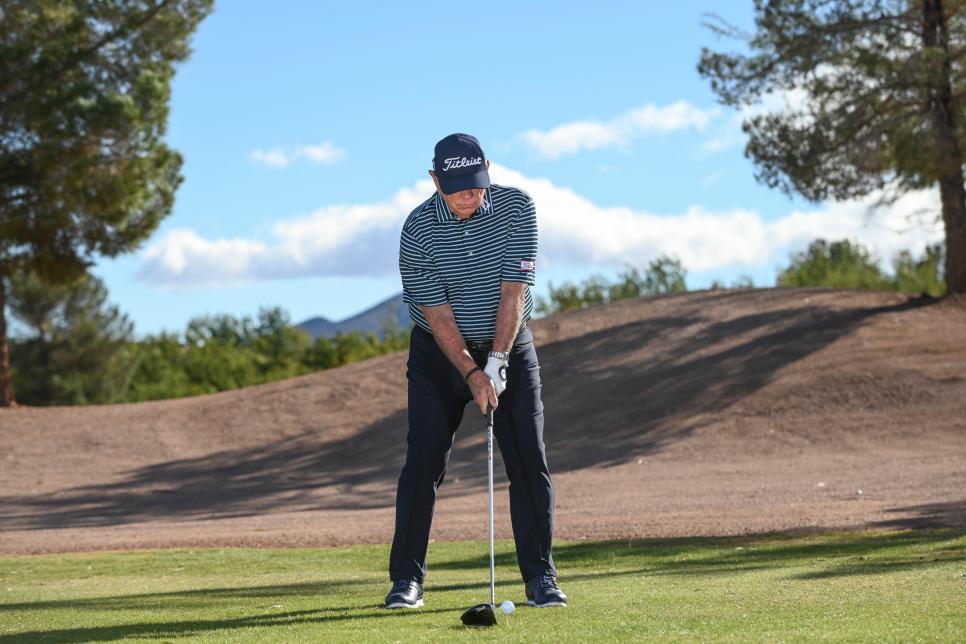
FOREVER FIX
■ When you have time to practice, here are a couple of slice-busting drills. First, the split-hands drill: Separate your hands on the grip, like a hockey player, and make half-swings back and through. Notice how your lead arm folds as you go through and your trail arm rolls over (below).
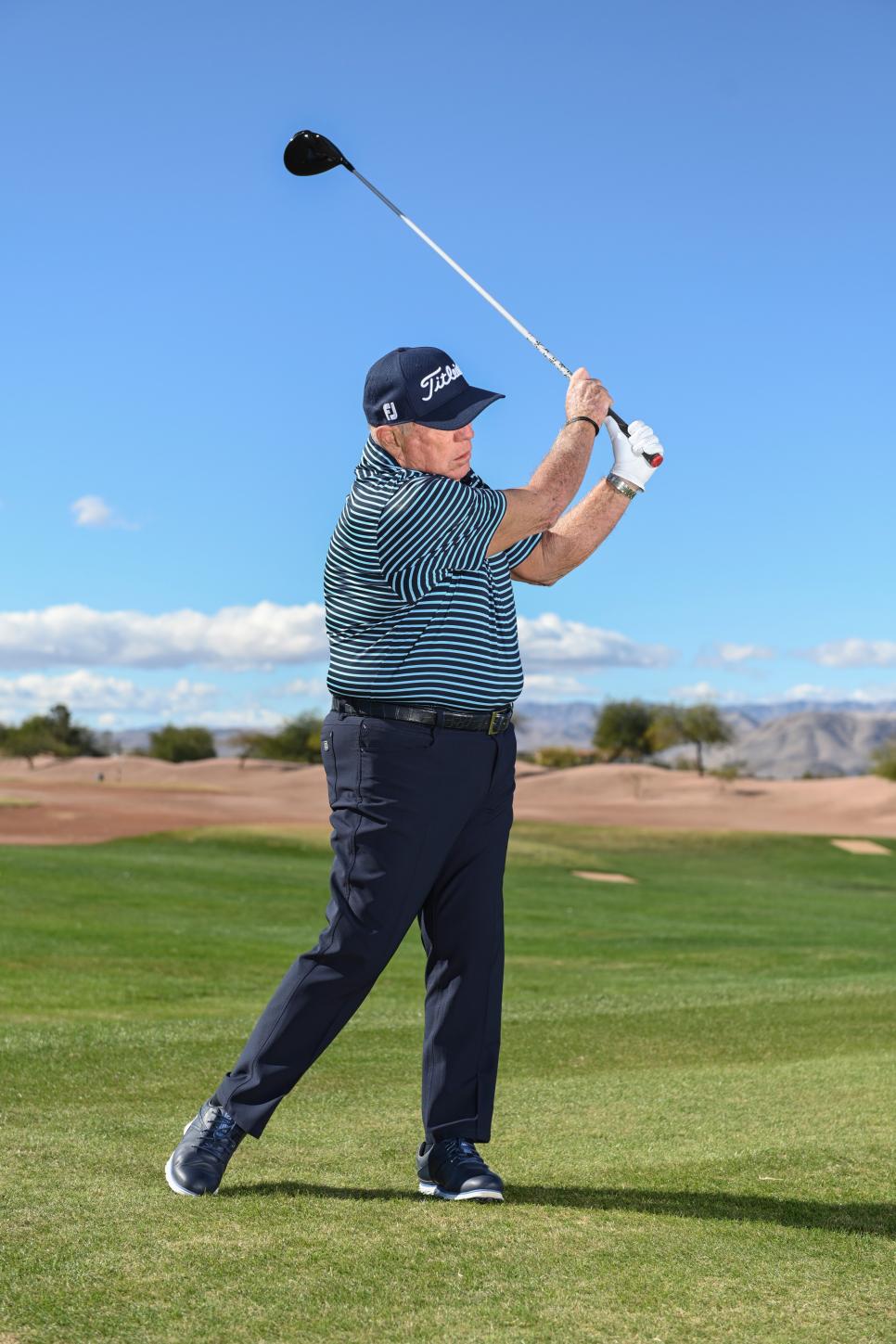
Another great exercise is simply making swings like you’re holding a baseball bat. Slicers have a tendency to drag the grip through the shot, and waist-high baseball swings train the arms to rotate as the club passes through the hitting area. Always alternate drills with hitting balls normally, trying to transfer the feel from the drill into your regular swing.
Remember to be vigilant about your setup with the driver—ball back a little, head back, trail arm soft—because if you get the release right but don’t fix the setup, you’re only doing half the work.
RELATED: For more Butch Harmon tips, check out his Golf Digest Schools series here!
HITTING WEAK DRIVES
FAST FIX
■ Like slicers, players who want more distance do something to correct the issue that ends up backfiring. They grip the club all the way at the end, even with the cap of the handle slightly in the palm of the top hand. That might feel powerful, but the handle will tend to shift in the hand at the end of the backswing. (If you have a wear mark in the heel of your glove, you’re guilty!) When the grip shifts, you have to regrip it as you start down, which casts the club away from you, straightening your arms and wrists too early, throwing away your power.
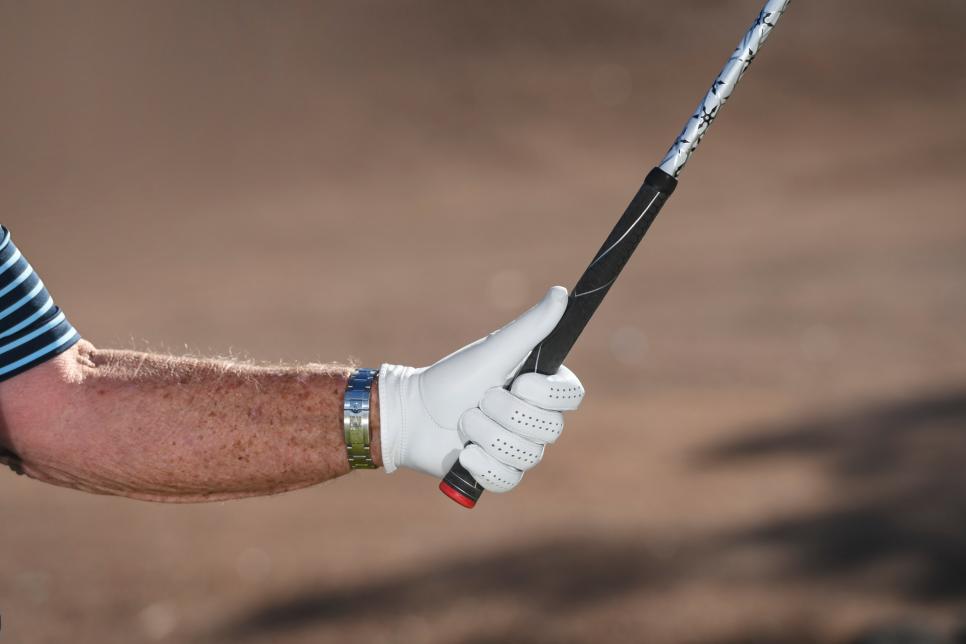
The simple on-course fix is to grip with your top hand so that about an inch of the club is showing (below). Then, put most of your grip pressure in the last three fingers of that top hand, and keep it constant throughout the swing. That’ll help you maintain some club lag on the downswing and produce more acceleration through the ball.
FOREVER FIX
■ Back on the range, work on getting comfortable hitting balls with your new choked-up grip. Obviously, it makes the club slightly shorter and lighter, so pay attention to your setup positions and swing tempo. Start with slower swings but build up to full speed, making sure you’re catching the ball in the middle of the face—the No. 1 key to getting the most out of whatever speed you can generate.
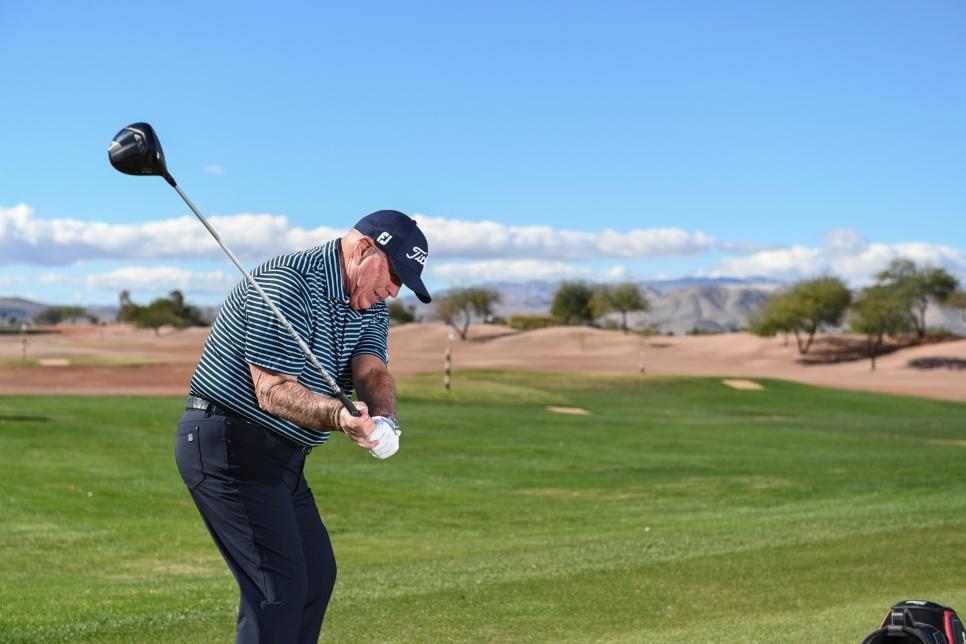
Next, use the pump drill, one of my all-time favorites. Without a ball at first, practice swinging to the top and pumping the club halfway down to feel the wrists staying fully hinged. That’s the lag (below). Pump the club down and back to the top two or three times before swinging through normally. You can hit some balls this way, too, and then intersperse regular swings with the training to start ingraining the feel of more lag and more speed at the bottom of the swing.
DROP-KICKING WOODS
FAST FIX
■ Modern fairway woods and hybrids, with their head shape and low center of gravity, do a great job of helping the ball launch high and carry far. But a lot of golfers still have the instinct to try to help the ball into the air with these lower-lofted clubs. On the downswing, they hang back on the trail foot and flip the club at the ball. The clubhead bottoms out too far back and bounces off the ground and into the middle of the ball. Hence the term “drop-kick.” No fun, as we all know.
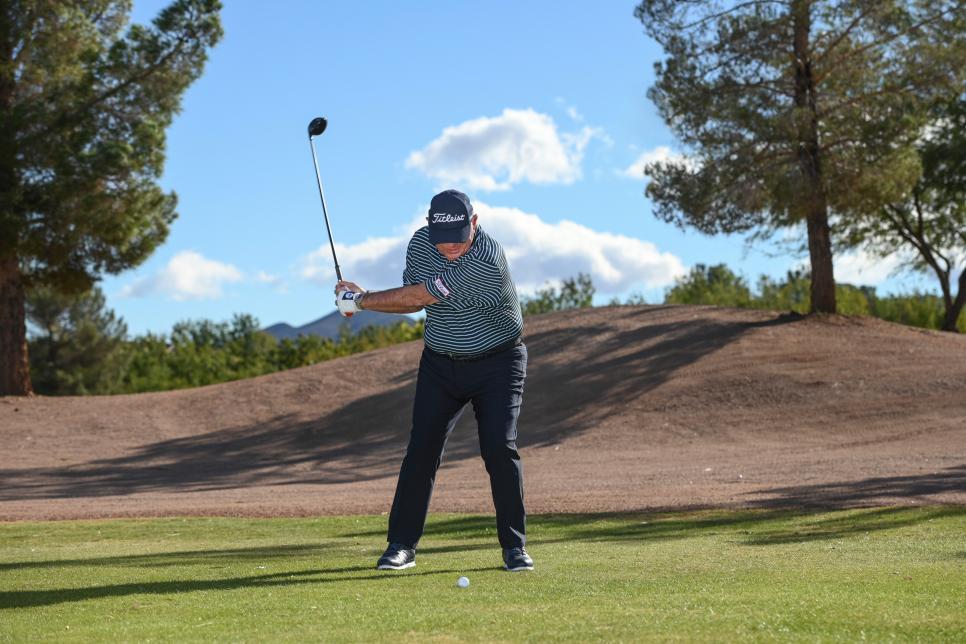
The best way to fix this fault is to focus on moving your chest forward as you start down (below). I like players to make slow-motion practice swings to really feel whatever they’re trying to do. If you can’t do it slow, you can’t do it fast. So use time between shots, when you’re waiting to hit or walking down the fairway, to simulate that forward shift on the downswing.
RELATED: Watch Butch Harmon new Golf Digest Schools series!
FOREVER FIX
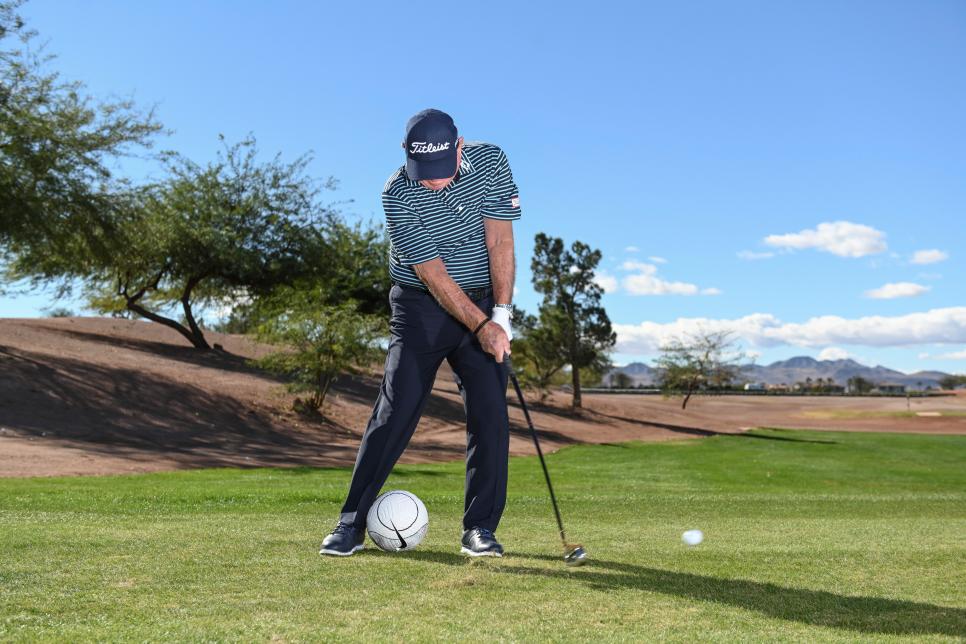
■ The hang-back can be a nasty habit, so it’ll take some reps on the practice tee to retrain your body to go forward. One great way to force the issue is the step-through drill: Take your normal setup, swing to the top, and as you swing down, step toward the target with your trail foot. This exaggerates the forward shift through the ball. Gary Player famously used to swing like this in competitive rounds, getting his whole body through the ball to maximize his power.
One more technique to check that you’re moving forward is to key on the lower body. Set up with a volleyball or soccer ball against the instep of your trail foot, and make swings applying pressure to that ball on the downswing (below). Feel that your chest is “covering” the golf ball at impact, and to do that, you have to get your lower body driving forward and clearing the way.
BLADING IRON SHOTS
FAST FIX
■ Many golfers have a misconception about how to hit a solid, high-flying iron shot. They think the club and body should return to their address positions at impact. That’s a recipe for skulling. Your body should be shifting and turning forward when you hit the ball, with 70 to 80 percent of your weight on your front foot. Also, the club should be leaning toward the target much more than it was in the setup. Those are the keys to making crisp contact.
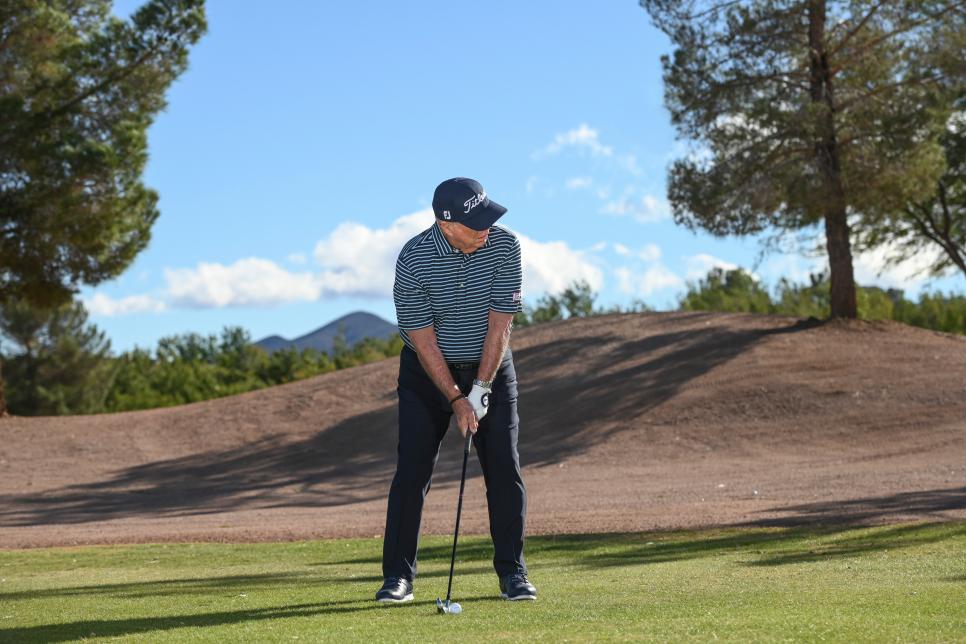
When you play, take every opportunity to mimic the feel of proper impact. As you’re setting up with an iron, shift your weight and the club forward, pressuring the back of the shaft with your trail side. Then go back to your normal setup, and swing.
It’s also a good idea to cheat your ball position back, in line with your shirt buttons (below). Remember, the club should touch down after striking the ball. Instead of trying to clip the ball off the grass, think of trapping the ball against the ground.
FOREVER FIX
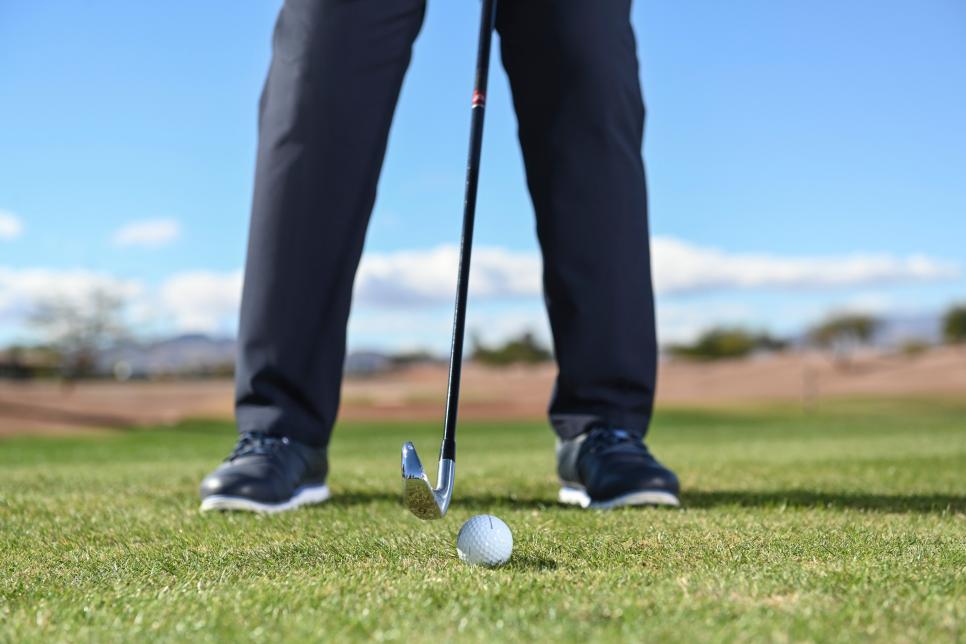
■ Hitting the ground after the ball is a feeling that a lot of players have to get used to, but it’s what all great ball-strikers do. One drill I use with players almost every day is setting up with a middle iron, then lifting the clubhead so the leading edge is level with the top of the ball (below). To catch the ball solid from that starting position, you have to hit down and through, or else you’ll thin it or even whiff it. This is strong medicine for skullers.
One question I get a lot is, how can you make the ball go higher by hitting down more? The answer is, hitting down creates solid contact. Every iron in your bag has enough loft to send the ball way up in the air. If you hit it pure, with the shaft and your weight forward, your iron shots will soar.
PITCHING LONG/SHORT
FAST FIX
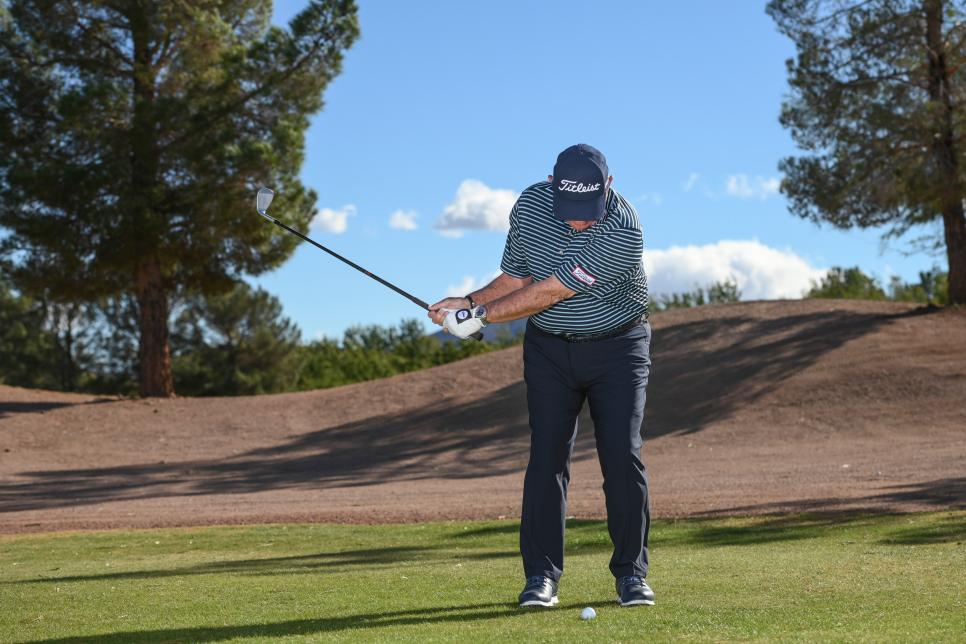
■ When most golfers have a pitch shot of, say, 20 to 40 yards, they struggle with distance control—dumping it short or launching it over the green. There’s usually one major fault here: a long backswing that forces you to slow down through the strike to try to manufacture the right distance. With that kind of guesswork, you’re looking at unpredictable contact, and if you do catch it flush, unpredictable speed.
When you play, focus on making a shorter backswing with minimal wrist hinge (below), then turning your body to the finish. Don’t rely on your hands and arms to create the shot at impact; set the backswing length with your arm motion, and then rotate your chest to face the target. You also can think about pushing through with your trail side, whichever clicks for you. Just think, Arms back, body through for better distance control.
FOREVER FIX
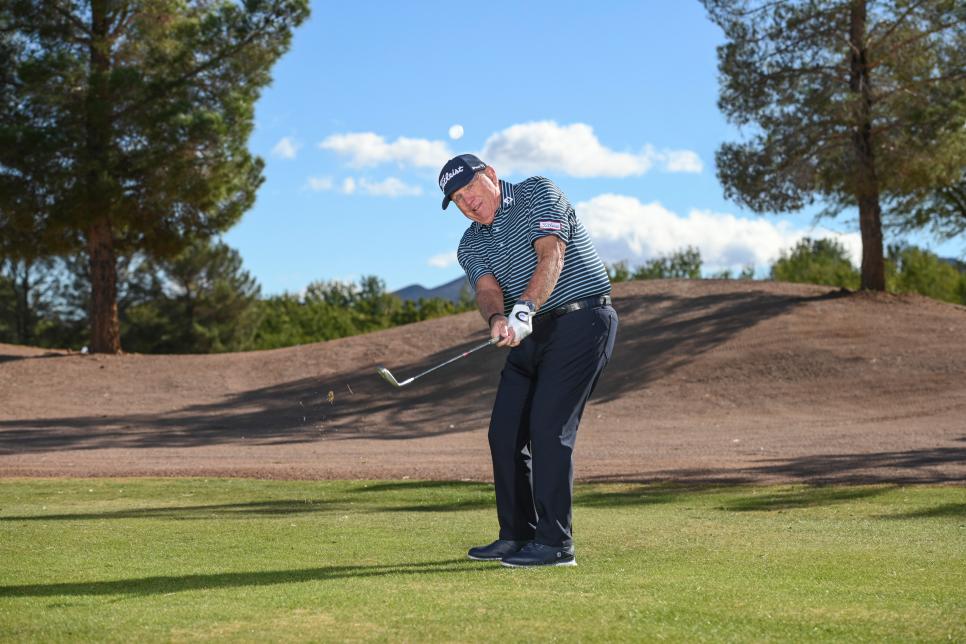
■ When you practice, spend time drilling that body rotation through the ball. Most golfers are so accustomed to a handsy swing on pitch shots that it takes some retooling to get the body moving in sync with the club (below). Hand action tends to produce a steeper impact; body turn shallows the path into the ball—so practice brushing the grass with the club, not digging and taking divots. You’ll have to rotate your body to do that.
As your contact improves, distance control becomes a matter of trajectory. Experiment with different ball positions to learn shots for various hole locations. Play the ball back in your stance and lean the shaft forward to produce a lower shot that runs. Move the ball forward and set the shaft more vertical at address for a higher shot that lands softly. Develop those two pitching techniques, and you’ll be able to get to any pin out there.
STUBBING CHIP SHOTS
FAST FIX
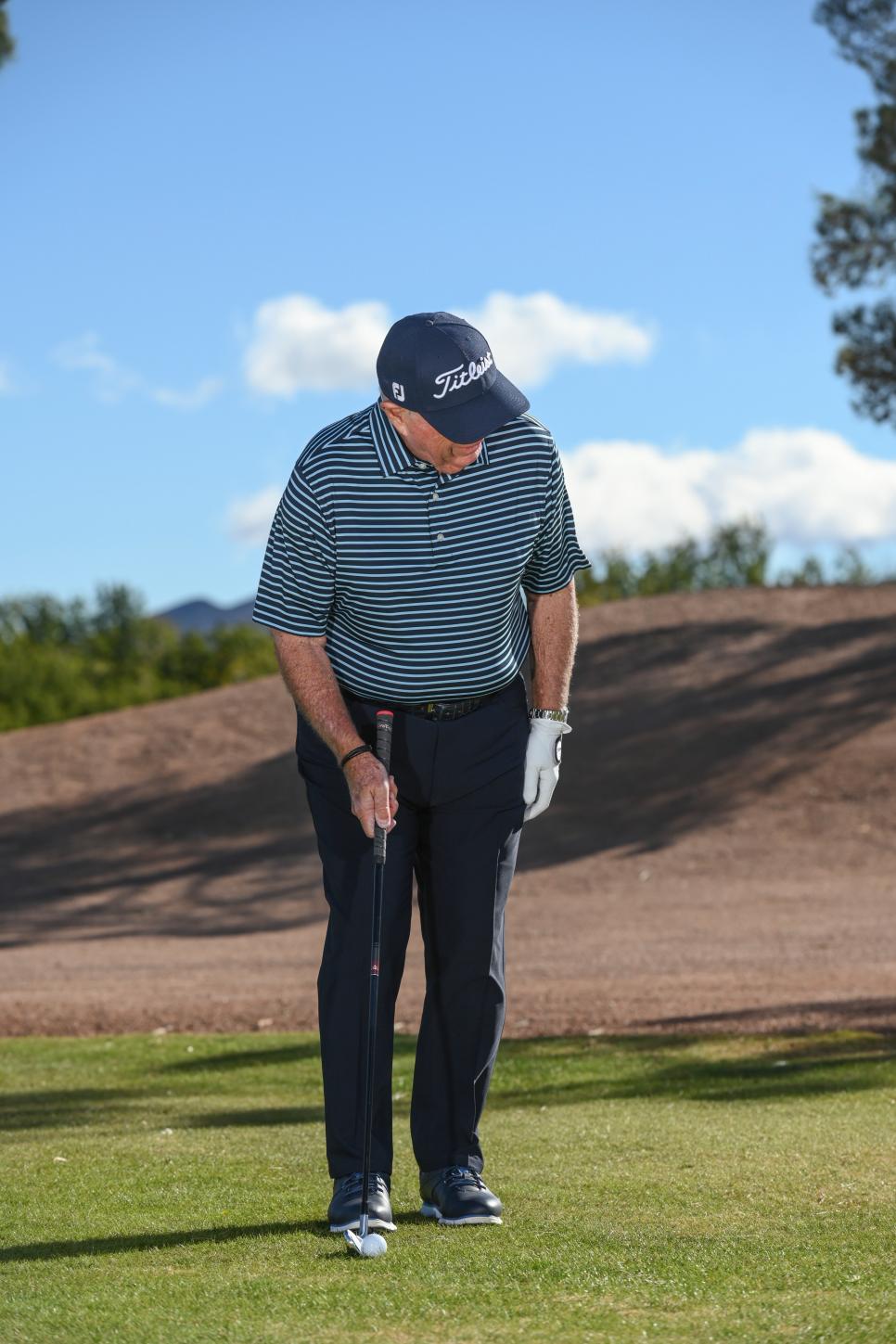
■ Chipping looks so easy when you see the pros do it on TV. That’s because they do two important things really well that most golfers don’t. First, they aim the clubface, just like on a putt. Second, they make a slightly downward strike for consistent impact and spin. Amateurs tend to play the ball too far forward, and I rarely see them aiming the face. Even if they do get it solid, the ball doesn’t go where they want.
These are easy adjustments you can make on the course. It’s all about being organized in your setup. Start by standing with your trail foot so that the instep is in line with the ball (below). Next, aim the clubface where you want the ball to start, considering any slope on the green. Then, push your weight and your hands a bit toward the target. Now you’re ready to pinch the ball crisply off the grass and get it rolling on line.
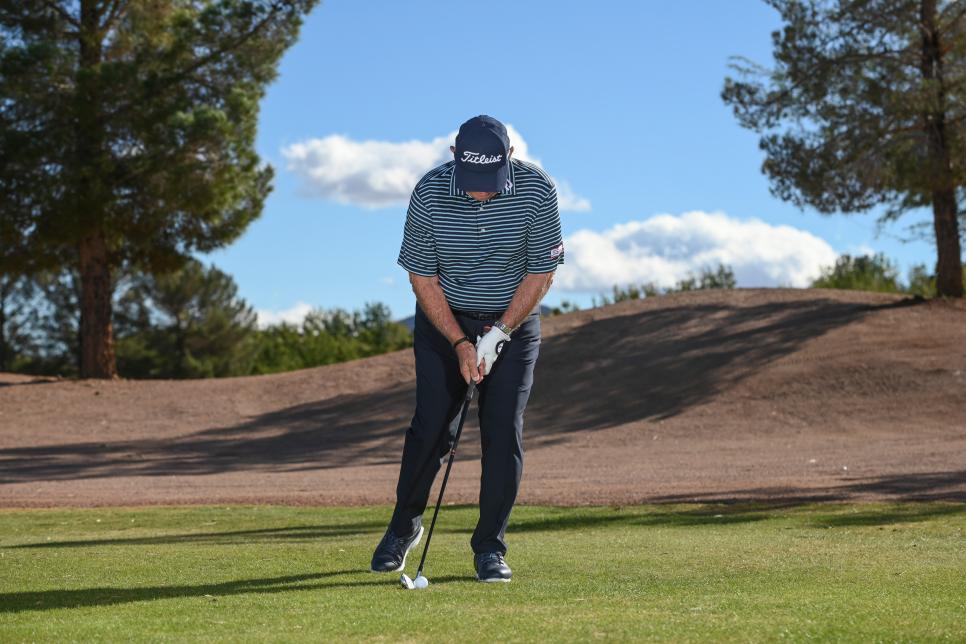
FOREVER FIX
■ Setting up correctly should be fairly easy, but there is something I see in poor chippers that takes a little work to overcome. If you stub a lot of chips, catching the ground before the ball, you’re probably freezing your body and flipping your trail hand at impact. Instead, let your body respond naturally to the swinging motion. That will keep the swing’s low point forward for ball-then-turf contact. A good feel is the trail knee kicking in softly on the downswing to start the forward motion.
Here’s my go-to drill for chipping: Take a normal setup—ball back, clubface at your target—then pull back your trail foot and set it up on its toes (above). Feel how this pushes weight to your front foot and sets your whole body ahead of the ball. Hit some chips from this stance. It’ll keep your body center in the ideal impact position, so you can focus on just making a little turn through the ball.


